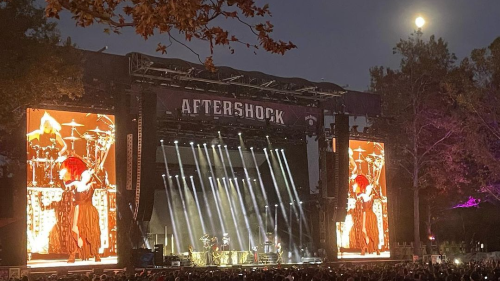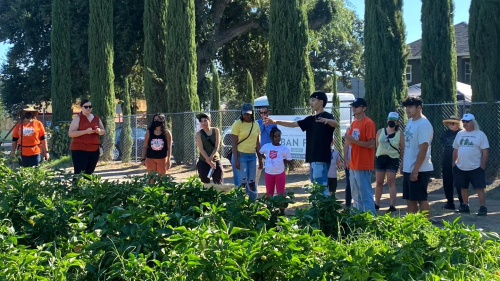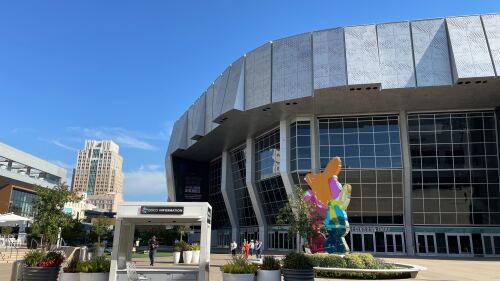In the 1880s, there was an oak grove — but there wasn’t quite an Oak Park in Sacramento. Not until real estate developer Edwin Alsip transformed a 230-acre ranch, known then as William Doyle Ranch, and renamed it.
Edwin subdivided the property into 56 blocks + renamed the area Oak Park in honor of the eight-acre grove of the hardy trees at its center.
Not long afterward, Oak Park became home to Sacramento’s first “streetcar suburb,” with the cars being pulled by horses and then replaced by electric trolleys in 1891. Once this mode of transportation picked up steam, it brought business and residents with it. For example, Steen’s Bar opened in 1892 (closed in 1969) as Oak Park’s first business under the Electric Railroad Exchange.
To add to the neighborhood’s amenities, the California State Fair moved to a fairground on Stockton Blvd in 1909, where Aggie Square is today.
Although the neighborhood promoted “no city taxes,” this meant residents also had to go without city services like a sewer system. The working class opted for the more affordable Oak Park lots, while middle-class or wealthy buyers moved to sanctioned City of Sacramento neighborhoods with sewage + water systems.
When George Dunlap — a Black cook who learned his trade in Southern Pacific’s dining cars — moved to Oak Park in 1906, he shook up the culinary scene.
After launching restaurants around Oak Park, including the fairgrounds diner and a dining car service for the Sacramento Northern Railway trains + ferry, he transformed his Oak Park home into Dunlap’s Dining Room, which gathered guests from all over — including C.K. McClatchy — to get a taste of the southern cooking + hospitality. The eatery officially closed in 1968.
With plenty of places to eat, shop, and sleep, Oak Park was officially annexed to the City of Sacramento in 1911. Cheers to getting that sewage system.
After WWII
After the war, more Black residents began moving into the neighborhood, as many other neighborhoods were off-limits due to restrictive racial covenants of the Jim Crow era. The West End Black community was also relocated to Oak Park. The neighborhood then emerged as a focal point of Sacramento’s racial tensions + struggles during the Civil Rights era.
Streetcar lines that carried workers downtown stopped in 1946 and the construction of US Hwy. 50 and Hwy. 99 in the 1950s and 1960s forced many businesses and residents to leave Oak Park for “automobile suburbs.”
To help counter the rapid changes impacting the Black community, George Seabron began working towards fair housing within Oak Park by teaming up with the NAACP and the Urban League. Seabron Real Estate sold property in Oak Park to Sacramento’s Black community.
In 1969, Seabron and partners purchased a grocery store at 2949 35th St. that served as a place for the community to buy groceries + receive training for jobs. With the influx of support, Oak Park’s cultural institutions thrived through the former Belmonte Art Gallery and Coffee House, the Sacramento Observer and the Guild Theater.
More recent developments
By the 1970s, the Sacramento Housing and Redevelopment Agency (SHRA) established the Oak Park Redevelopment Area. The agency bought the bulk of Oak Park’s abandoned business district on 35th St. and tore down the buildings to replace them with affordable housing.
Recent projects supported by the SHRA — like the 2003 restoration of Guild Theater at 2828 35th St. — showcase the commitment to creating a socially and ethnically diverse community and revitalizing Oak Park’s historic importance to the Sacramento community.
Arguably the biggest change the neighborhood has seen in recent decades is the revitalization of the strip on Broadway, now known as the Triangle District. Spearheaded by Kevin Johnson, the former mayor and professional basketball player, the district is one of the most distinctive and thriving parts of the city, with several local retail shops, clothing stores, and restaurants.
Want to see what Oak Park used to look like for yourself? California State University created a self-guided walking tour with a map and original visuals for remodeled historic buildings.













